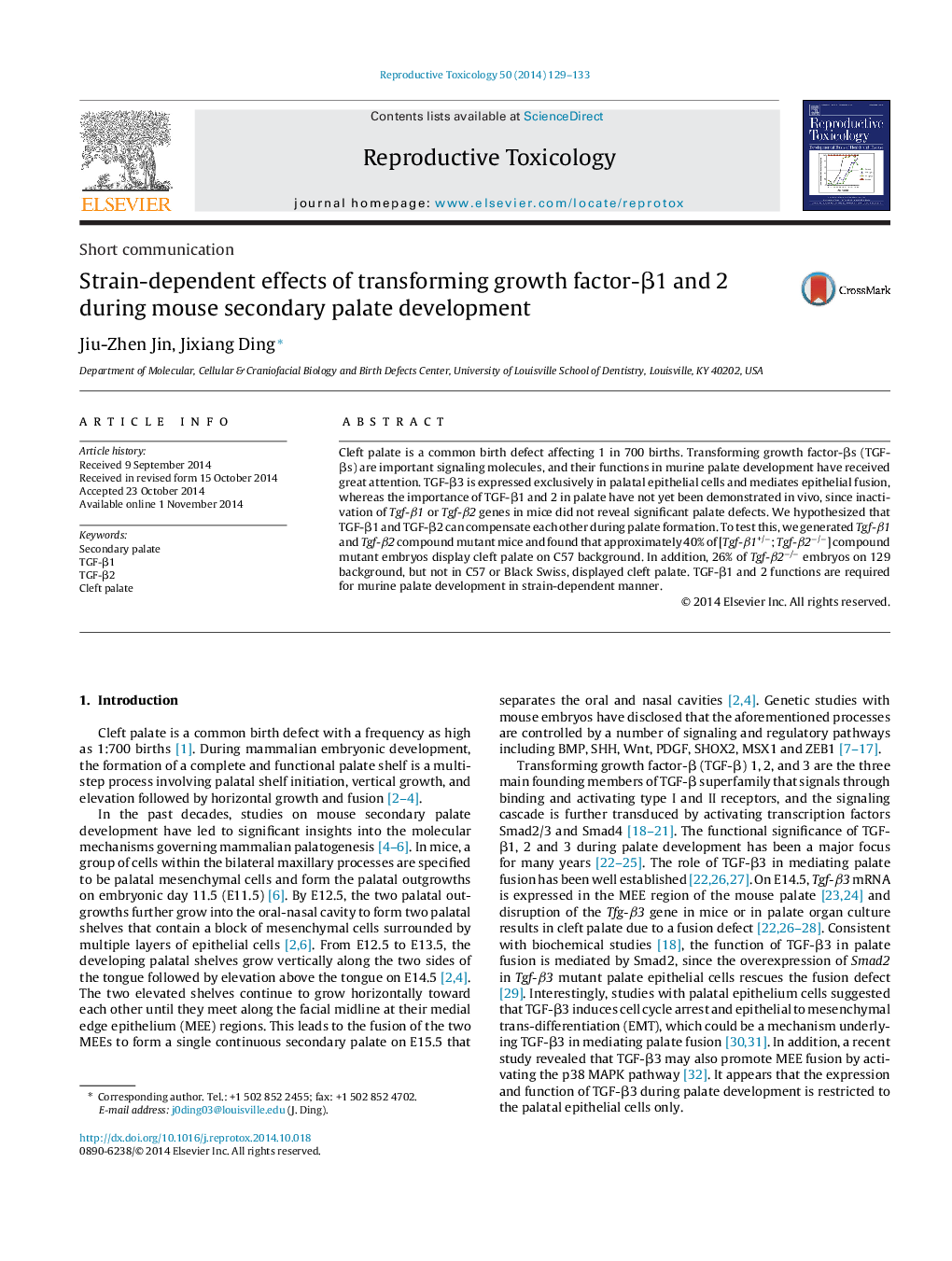| Article ID | Journal | Published Year | Pages | File Type |
|---|---|---|---|---|
| 2593501 | Reproductive Toxicology | 2014 | 5 Pages |
•The function of TGF-β1 and TGF-β2 during mouse secondary palate development has not been demonstrated in vivo.•Loss of TGF-β2 function in mice affects secondary palate development in a strain dependent manner.•26% of Tgf-β2−/− embryos on 129 background, but not on C57 or Black Swiss, displayed cleft palate.•Functional compensation between TGF-β1 and TGF-β2 during mouse secondary palate development on C57 background.•40% of [Tgf-β1+/−; Tgf-β2−/−] embryos display cleft palate on C57 background.
Cleft palate is a common birth defect affecting 1 in 700 births. Transforming growth factor-βs (TGF-βs) are important signaling molecules, and their functions in murine palate development have received great attention. TGF-β3 is expressed exclusively in palatal epithelial cells and mediates epithelial fusion, whereas the importance of TGF-β1 and 2 in palate have not yet been demonstrated in vivo, since inactivation of Tgf-β1 or Tgf-β2 genes in mice did not reveal significant palate defects. We hypothesized that TGF-β1 and TGF-β2 can compensate each other during palate formation. To test this, we generated Tgf-β1 and Tgf-β2 compound mutant mice and found that approximately 40% of [Tgf-β1+/−; Tgf-β2−/−] compound mutant embryos display cleft palate on C57 background. In addition, 26% of Tgf-β2−/− embryos on 129 background, but not in C57 or Black Swiss, displayed cleft palate. TGF-β1 and 2 functions are required for murine palate development in strain-dependent manner.
